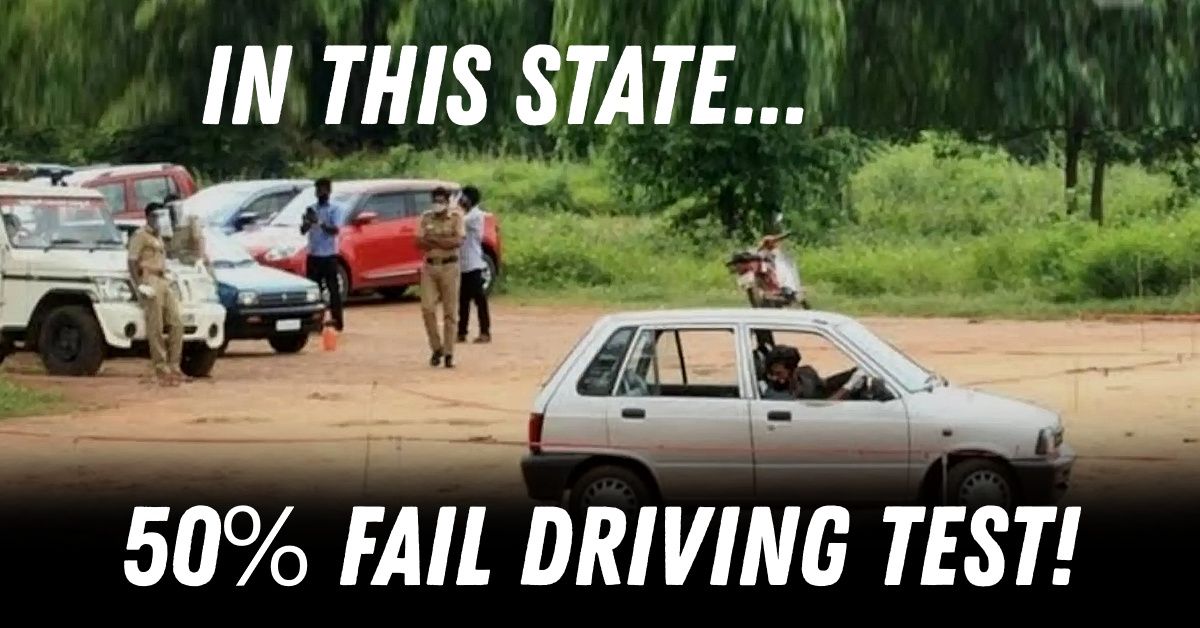Half Of You Won't Pass Driving Test In This Indian State!


In many Western countries, passing driving tests require serious preparation. Not so in India—here, in most states, driving tests are a mere formality. No one flunks them.
However, things are changing—at least in Kerala. Kerala’s revamped driving test has turned the once-routine licensing process into a significant hurdle for many applicants. With nearly 50% of candidates failing the test, the state’s Motor Vehicles Department (MVD) has introduced stricter evaluation measures to improve road safety. While these reforms aim to ensure only skilled drivers hit the roads, they have also exposed widespread gaps in driving proficiency across the state.
The pass rate for Kerala’s driving test has dropped sharply from 95-100% to just 40-52% after the introduction of new, more stringent assessment methods. Key changes include:
• More Complex Test Scenarios: Candidates must now perform advanced manoeuvres like angular parking, parallel parking, zig-zag driving, and gradient navigation on specially designed tracks. These tasks simulate real-world challenges, demanding greater precision and control.
• Testing on Public Roads: Unlike earlier tests conducted on closed tracks, applicants must now drive on public roads with live traffic. This evaluates their ability to handle real-world driving conditions.
• Technology-Backed Assessments: Vehicles used for tests are fitted with dashboard cameras and GPS tracking devices, ensuring an unbiased evaluation of candidates’ performance.
• Limited Test Slots Per Day: The MVD has capped the number of tests per Motor Vehicle Inspector (MVI) per day, prioritising quality over quantity. While this has improved scrutiny, it has also resulted in longer waiting periods for applicants.
The reforms come in response to growing concerns about Kerala’s rising road accidents. In 2024 alone, the state recorded over 44,000 accidents, leading to more than 3,700 deaths. Critics have long argued that lenient testing standards allowed unskilled drivers to obtain licences, contributing to reckless driving and fatal accidents.
• Probationary Licences: New drivers will now receive a probationary licence valid for six months to a year. Their driving behaviour will be monitored before they are granted a permanent licence.
• Simulation-Based Learner Tests: Learner exams now include hazard perception simulations and negative marking for incorrect answers. Candidates must score at least 50% to progress to the next stage.
• Upgraded Driving Schools: Driving schools are required to modernise their facilities, incorporating real-world track conditions such as slopes and zigzag routes to better train candidates.
Many applicants are struggling with common mistakes, which are proving costly under the new system:
• Poor Parking Skills: Candidates find parallel and angular parking particularly challenging. The only solution is extensive practice before appearing for the test.
• Speeding Issues: Exceeding speed limits, especially during public road tests, often results in failure. Maintaining legal speed limits is crucial.
• Lack of Hazard Awareness: Many fail the hazard perception test due to poor situational awareness. Practising real-world hazard recognition can improve performance.
• Test Anxiety: Nervousness leads to errors during key manoeuvres. Staying calm and composed during the test can make a significant difference.
The tougher rules have frustrated many applicants, with some waiting up to four months to complete both the learner’s and driving tests due to reduced quotas and increased scrutiny. This has even led some to seek licences in neighbouring Tamil Nadu, where testing procedures remain less stringent.
Driving schools, too, are feeling the heat. Many have protested against the reforms, citing the high costs involved in upgrading vehicles and test tracks. Additionally, cars older than 15 years are now ineligible for tests, forcing schools to invest in newer models.
The MVD is planning further measures to streamline the process while maintaining high standards:
• Increased Testing Capacity: To address long wait times, regional transport offices (RTOs) will conduct up to 100 tests per day under revised guidelines.
• Enhanced Road Safety Campaigns: Awareness initiatives, including marathons and school-based programmes, aim to instil safe driving habits from an early age.
• More Trained Instructors: Accredited driving schools will see an increase in experienced trainers to help applicants better prepare for the test.
Kerala’s new driving test system is undoubtedly challenging, but it marks a crucial step towards safer roads and more responsible drivers. While nearly half of all applicants may fail initially, the long-term benefits of reducing road accidents and improving driving skills are undeniable.
For those planning to take the test, preparation is key. Mastering parking techniques, improving hazard awareness, and staying calm under pressure can greatly improve the chances of success. After all, passing this test isn’t just about obtaining a licence—it’s about proving that you’re ready to navigate Kerala’s increasingly demanding roads safely.
As for other states, given the high accident rates, it might not be a bad idea to follow Kerala’s example.